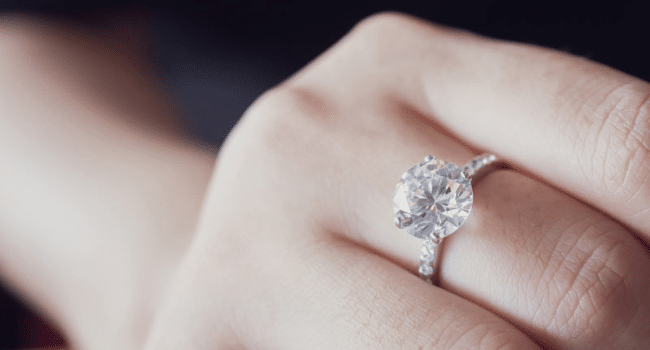Table of Contents
Wedding bands have been a symbol of love and commitment for centuries, evolving in design, and that means throughout exceptional eras. From easy gold bands to challenging, personalized designs, the adventure of wedding bands displays cultural shifts and converting tastes. This complete study of the evolution of wedding ceremony bands will manual you through the maximum popular developments and their significance over the decades.
Early 20th Century: Classic Simplicity
In the early 1900s, wedding bands were often undeniable, simple bands fabricated from gold. These traditional designs mirrored the times, emphasizing sturdiness and modesty. The awareness was on practicality, with many couples choosing matching bands. This era laid the muse for the way of life of replacing earrings with an image of eternal love.
The 1920s: Art Deco Influence
The 1920s added the glitzy Workmanship Deco development, impacting all plant parts, including wedding rings. Geometric shapes, ambitious strains, and intricate detailing have become famous. Platinum has become a desired metallic due to its energy and capacity to preserve tricky designs. We also shifted closer to more challenging and fashionable styles for the duration of this time, regularly complemented with ornate engagement ring designs.
The 1930s and 1940s: Hollywood Glamour
Hollywood’s impact during the 1930s and 1940s conveyed a dab of style to wedding ceremony bands. Rings began to function diamonds and other gems, inspired by the opulence visible on the silver display. The “eternity ring,” with stones set everywhere in the band, won popularity, symbolizing never-ending love. This period also saw an increase in white gold as an alternative to platinum.
The 1950s: The Rise of Matching Sets
The 1950s emphasized harmony and unity, which became reflected in the trend of matching wedding band sets. Couples desired rings that complemented each other, frequently designed to sit flawlessly alongside the engagement ring. Yellow gold regained its reputation, and easy, elegant designs were preferred, embodying the put-up-war choice for stability and lifestyle.
The 1960s and 1970s: Personalization and Experimentation
The social rebellion of the 1960s and 1970s conveyed a desire for qualification and self-explanation. Wedding bands have become more custom-designed, with unique designs and custom engravings. Alternative metals such as titanium and tungsten started to appear, catering to those seeking non-traditional options. This era marked the beginning of couples seeking out wedding bands that meditated on their non-public fashion and values.
The 1980s: Bold and Flashy
Formidable, flashy designs in fashion and jewellery had characterized the 1980s. Meteorite wedding bands featured large stones and more intricate settings, regularly combining various metals and gems. The effect of movie star weddings performed an enormous position in placing trends, with many couples meaning to emulate the highly-priced styles visible in the media.
The 1990s: Minimalism and Classic Revival
In evaluating the excess of the 1980s, the 1990s saw a cross lower back to minimalist designs. Simplicity and elegance have been vital, with many couples choosing traditional bands with diffused detailing. White gold and platinum had been famous picks, offering a cutting-edge but timeless look. The engagement ring layout all through this period frequently featured solitaire diamonds, complementing the understated wedding ceremony bands.
The 2000s: Vintage Inspiration
The turn of the thousand presented a resurgence of side interest in one-of-a-kind and old-fashioned designs. Couples sought jewellery with ancient significance or those stimulated by extraordinary eras. Edwardian and Victorian styles have become famous, featuring elaborate filigree paintings and milgrain detailing. This period also saw growth in the use of coloured gemstones, adding a touch of speciality to traditional bands.
The 2010s: Customization and Technology
The 2010s marked the rise of customization, with technological advances bearing in mind exceptionally personalized wedding ceremony bands. Couples could now lay out their rings, incorporating significant symbols, precise styles, and custom engravings. Blended metals have turned into a well-known pattern, offering a state-of-the-art wind on customary plans. Using reasonable and morally obtained materials likewise built up momentum, mirroring a developing cognizance of natural and moral inconveniences.
The 2020s: Sustainability and Innovation
In the modern decade, sustainability and innovation are at the forefront of wedding band developments. Eco-friendly substances and lab-grown diamonds are becoming increasingly popular as couples look for environmentally accountable options. Designs preserve to conform, with a focal point on individuality and forte. Technology plays a huge role, allowing problematic, custom designs that replicate personal memories and values.
The Future of Wedding Bands
As we look to the future, wedding ceremony bands will possibly preserve to adapt, inspired by technological advancements and moving cultural values. Technological advancements such as 3-D printing and PC-aided design (CAD) are revolutionizing the jewellery enterprise, making an allowance for rather tricky and custom-designed designs that have been previously impossible. These technologies allow jewellers to create bespoke portions that cater to man or women’s tastes and choices, presenting couples the opportunity to design specific earrings that replicate their non-public testimonies and values.
Sustainability is another primary fashion shaping the destiny of wedding bands. With increasing awareness of environmental and moral issues, many couples are searching for green and ethically sourced substances. Lab-grown diamonds and recycled metals are becoming famous alternatives to conventional options, presenting the same beauty and satisfaction without the associated environmental effects.
Over the decades, the evolution of wedding ceremony bands showcases a captivating journey of changing patterns, cultural impacts, and technological improvements. From traditional simplicity to personalized masterpieces, wedding bands have continually tailored to reflect the values and goals of every era. As trends evolve, one element remains constant: the marriage band’s enduring image of affection and commitment.
Read More on KulFiy
